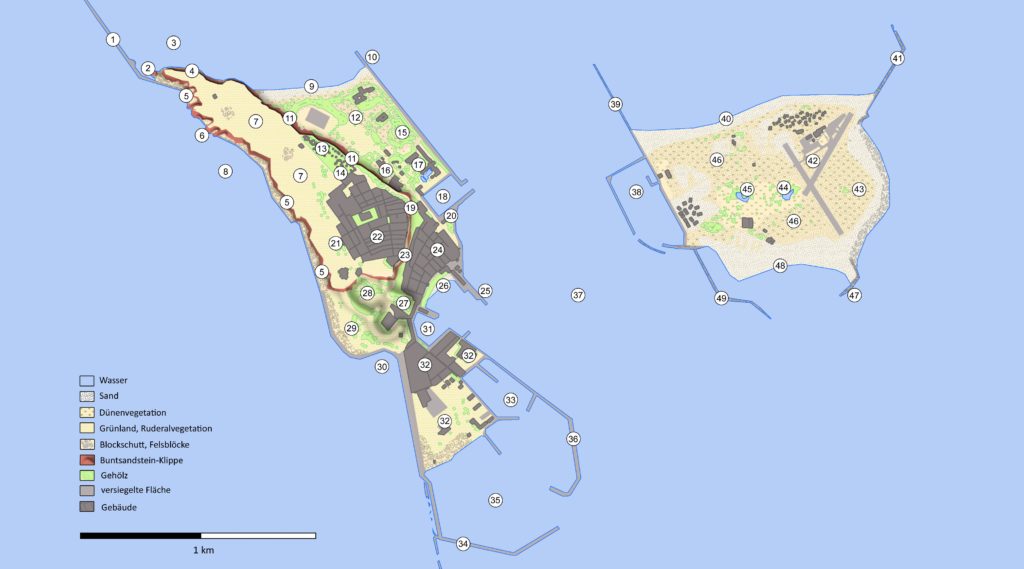
The sites shown in the map are also used for submitting data to ornitho.de.
Main island:
1. Northwestern pier
A good site for gulls, Cormorants, Purple Sandpiper and Turnstones. Between the Cormorants some Shags occur all year round and are best spotted from the northern part of the “Oberland” close to Lange Anna.
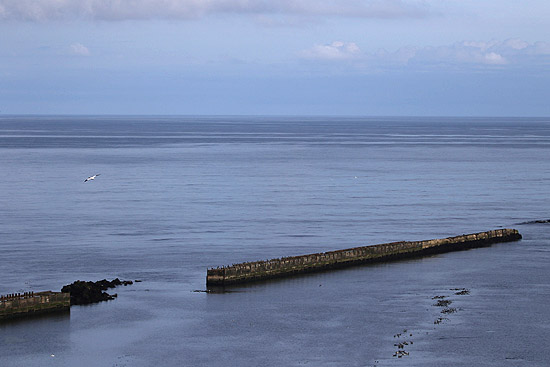
2. Northern tip/”Lange Anna“
From here the northwestern pier ist best checked for gulls and Shags. In summer, most cliff breeding seabirds can be seen. The “Lange Anna” is the symbol of the island.
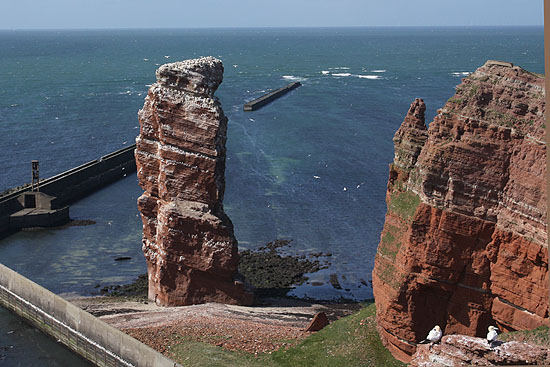
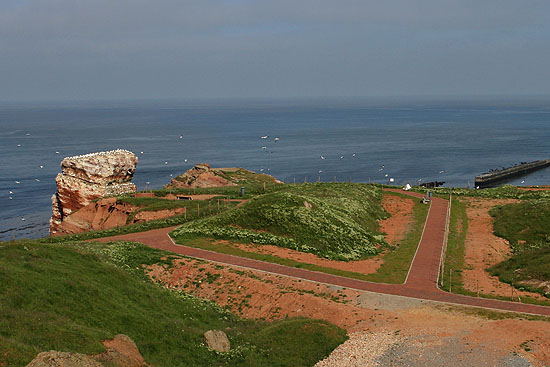
3. Rocky intertidal north of the island
The rocky intertidals contain a unique fauna and flora and are strictly protected. Therefore entry is prohibited. From the upper parts of the island or from the northeastern beach the birds can be seen reasonable well. During low tide mainly gulls, in winter also Purple Sandpipers and Turnstones use the site. During high tide mainly Common Eiders and in winter sometimes Red-breasted Mergansers, Red-throated Divers and grebes can be seen. The buoys north of the beach are the best site for Black Guillemots on Helgoland.
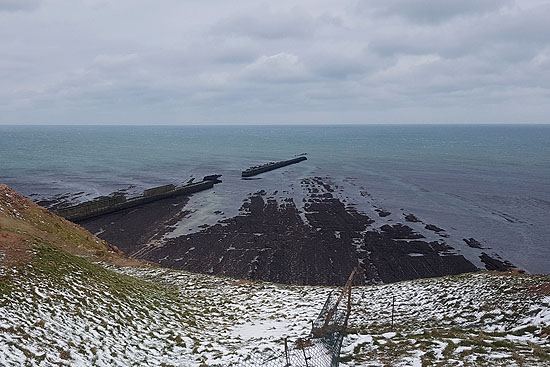
4. Northern cliff
Breeding site for Fulmars, Kittiwakes, Common Murres and Razorbills, but difficult to observe (best seen from northeastern beach).
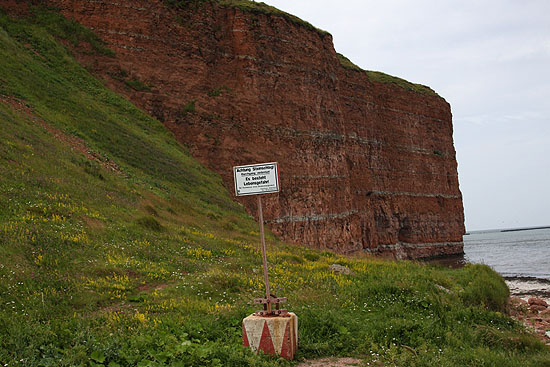
5. Western cliff
As western cliff includes the area north and south of the “Lummenfelsen”. The cliffs hold small colonies of seabirds, most importantly a large portion of the Fulmar population. The birds can only be watched from the top, as access to the area below the cliff is strictly forbidden due to the danger of avalanches and rock fall.
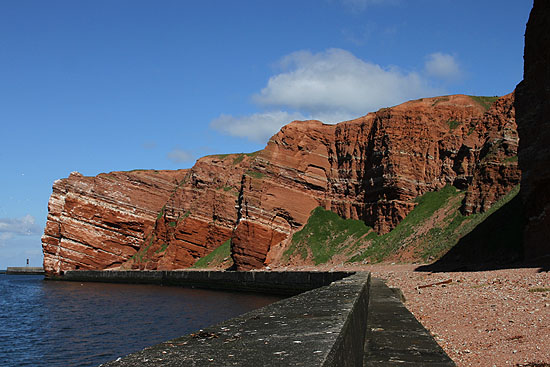
6. “Lummenfelsen“
The smallest nature sanctuary in Germany is home for thousands of seabirds, especially from March to September. Around noon the site is crowded with day-tourists and therefore best visited in the mornings and evenings. Most cliff-breeding seabirds (Gannets, Herring Gulls, Kittiwakes, Razorbills and Common Murres) can be observed and photographed very close. As with the western cliff, access is only allowed from the top.
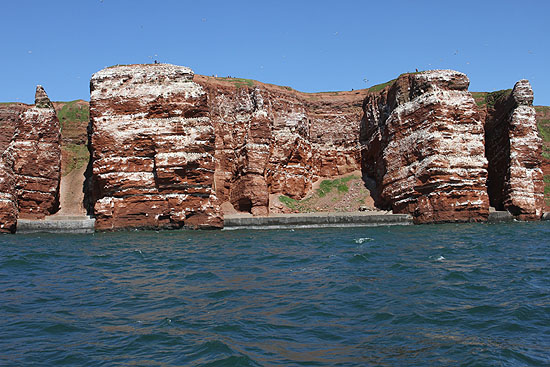
7. Upper land (“Oberland“)
The upper part of the island outside the viallge is excellent for larks, pipits, wheatears and Golden Plovers. Early morning is usually most productive. The two meadows grazed by cattle are great for thrushes and other birds preferring low grass, but must not be entered.
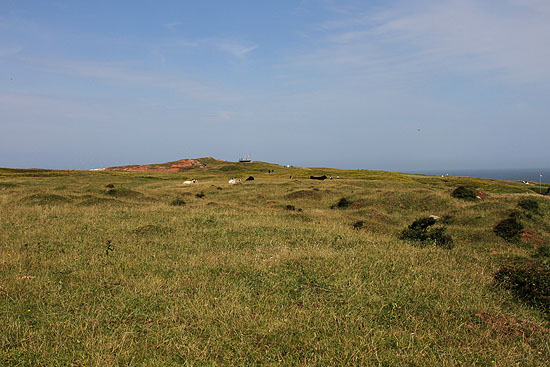
8. Rocky intertidal west of the island
As the northern intertidal strictly protected. From the top of the cliff birds can be seen, but the site is rarely productive. During high tide often large groups of Common Murres assemble there and with luck you may find a Puffin (almost annually) in between.
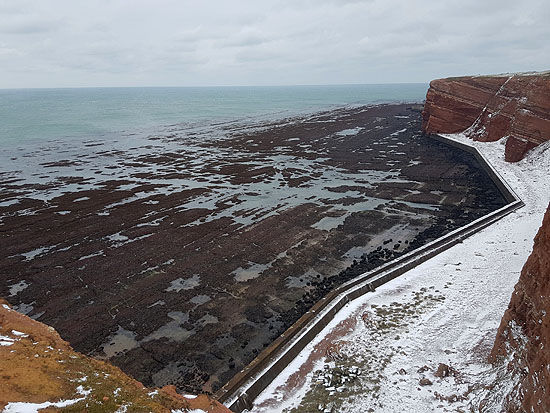
9. Northeastern beach
The beach between the youth hostel and the northern cliff is an excellent birding site. Especially when there is kelp washed up in the tideline, many birds as waders, gulls, pipits and wheatears gather here. The birds mainly feed on kelp flies and their larvae. The dunes along the beach are protected and must not be entered. The youth hostel provides wind shelter and therefore is one of the best sites for seawatching. However, during meal times, please do not block the windows. The bouys north of the beach often attract some Black Guillemots.
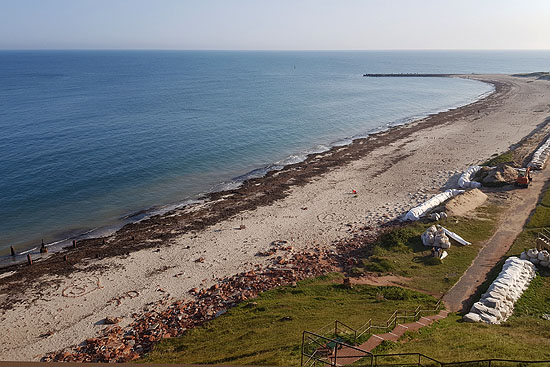
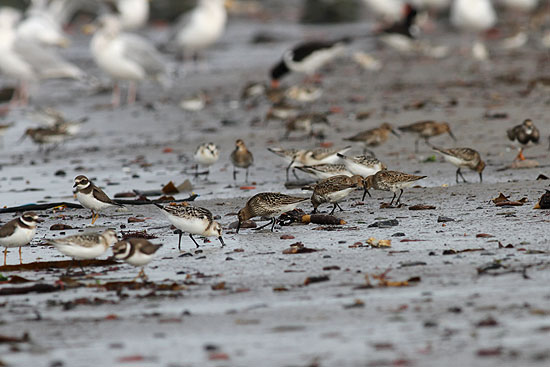
10. Northeastern pier
This small pier is a good site for Turnstones, Purple Sandpipers and gulls, especially during storms.
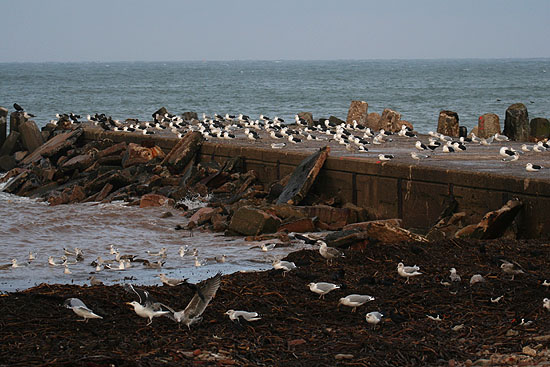
11. Eastern cliff
The cliffs and slopes between the power station and the northeastern beach are called eastern cliff, of which the northern part is protected. The bushes and also the compost pile are currently one of the best sites for passerines, especially during westerly winds birds use the sheltered area.
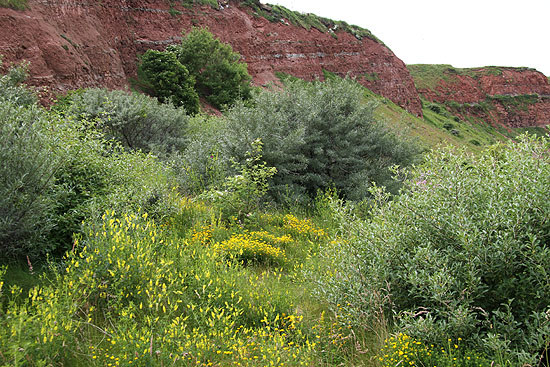
12. Northeast-area
The bushes in this area often hold many passerines, even the synthetic turf football pitch, but more the adjacent mawn meadows are good for thrushes, pipits and wheatears. The northwestern corner of the football pitch is one of the best sites for Ring Ouzels and Stonechats. The bushes south of the youth hostel and around the small barbecue area are excellent for passerines.
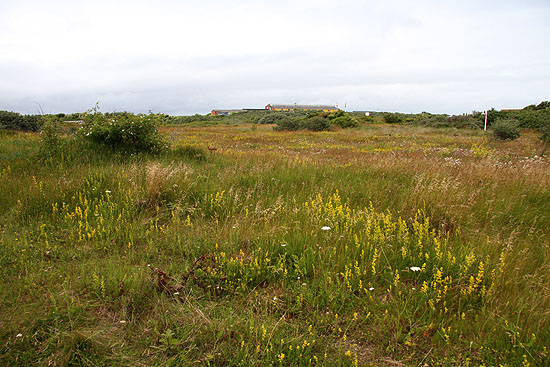
13. Gardens
The bushes in the gardens north and east of the Bird Observatory usually hold some passerines, but birding opportunities are limited. Please respect the privacy of the owners.
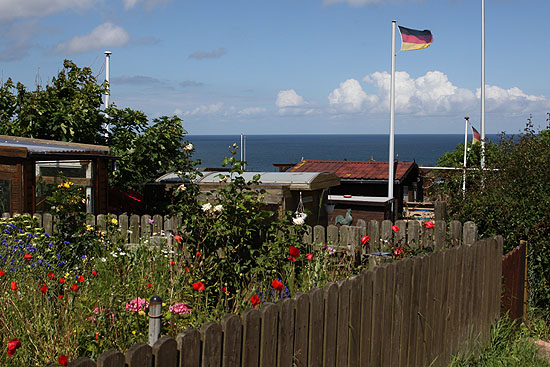
14. Bird Observatory
The Trapping Garden is part of the Bird Observatory and is used by many passerines for migratory stopovers. Several thousand birds are ringed here annually. Access is prohibited and only possible during public guided tours.
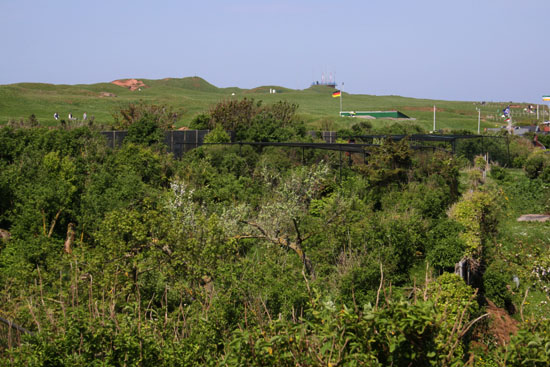
15. “Kurpark“
The area was created in the early 1990s. It contains many bushes, mainly Sea Buckthorn. The originally created pool is unfortunately dry, but is home to many orchids flowering in June. The bushes are excellent for passerines on migration.
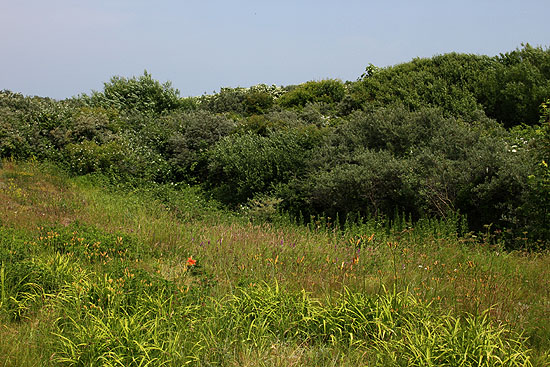
16. Power station
The bushes around the power station usually hold some passerines in spring and autumn.
17. “Kurgelände“
The lawn is often good for pipits, thrushes and Robins. In the bushes almost all Phylloscopus warblers recorded on Helgoland have been seen. The area also contains the local swimming pool, where in winter sometimes geese are feeding on the lawn.
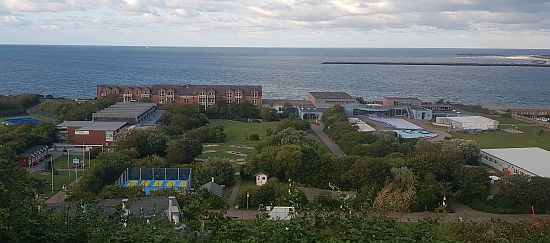
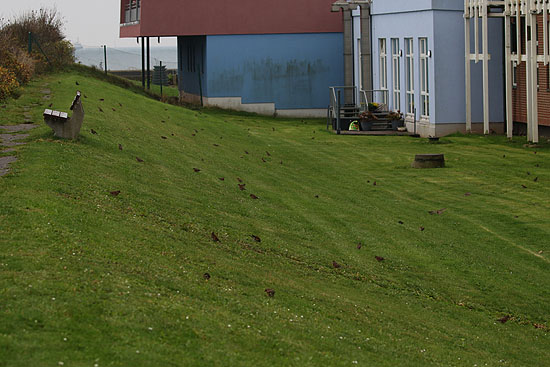
18. Northeast harbour
The harbour regularly holds Black Guillemots in winter, sometimes also divers and grebes. In summer there are rarely any interesting birds.
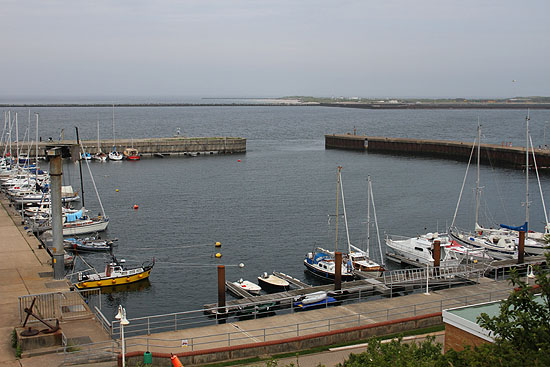
19. Great Steps
The bushes around the steps are excellent for passerines, especially Phylloscopus warblers. They are best watched from the lane above or from the steps. The area behind the Alfred-Wegener Institute must not be entered. On the steps please take care of passing people.
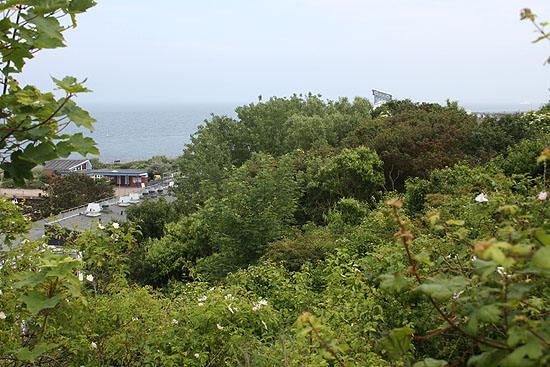
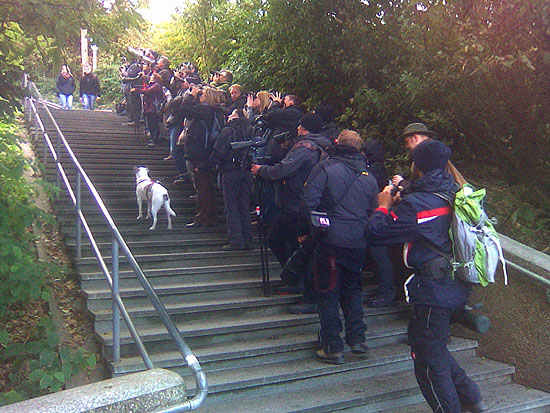
20. Library
The lawn around the library has some salt marsh vegetation, especially used by finches in autumn. In October it is also a good site for Twite.
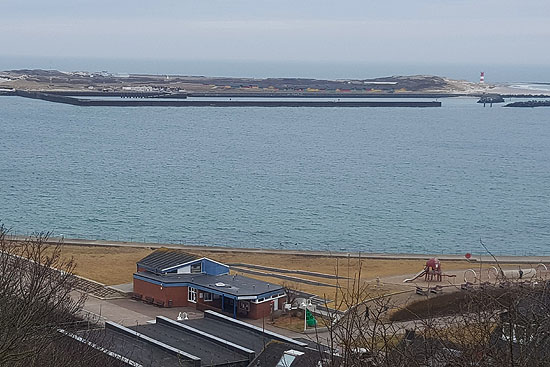
21. Lighthouse
The bushes around the lighthouse can be excellent, especially in early morning. However, due to ongoing development, the area has suffered considerably from distrubance.
In the night nocturnal migration can be spectacular, when the migrants call and flash in the lighthouse beam. If you’re lucky, a night walk can therefore be an unforgettabe experience!
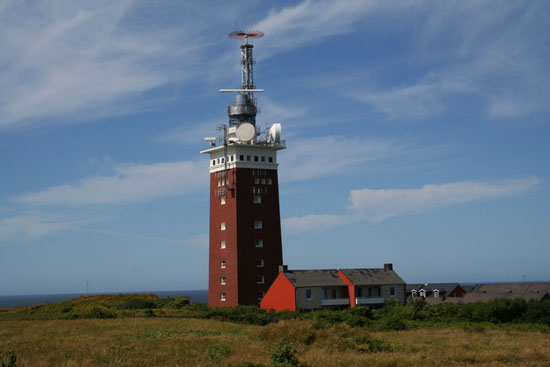
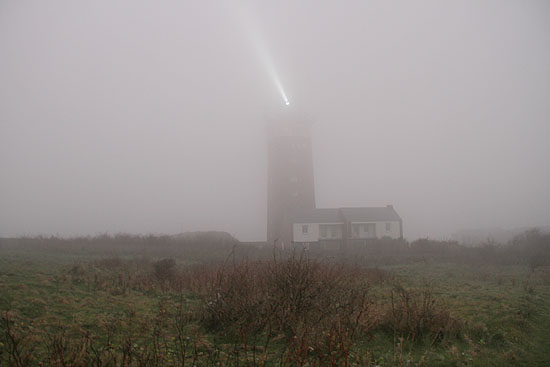
22. Upper village
The scattered trees usually hold some passerines on migration. Please respect the privacy of the inhabitants. The cemetary is strictly off-limit for birders!
23. “Falm“
The cliff above the village is called “Falm”. Especially the southern part is good, but birding opportunituies are limited, as the gardens are private property. Best observation opportunity is from the small steps south of the area.
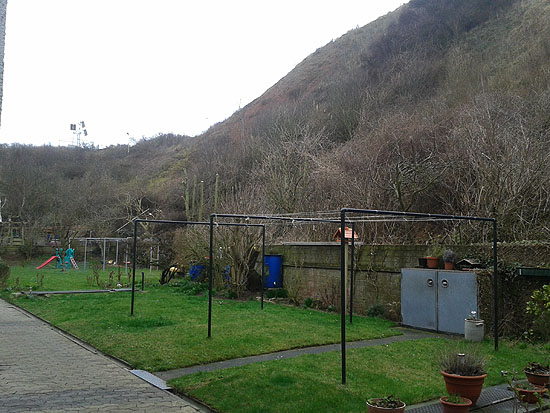
24. Lower village
Especially the trees in front of the supermarket often hold some warblers, but also the narrow alleys are sometimes productive. Please respect the privacy of the inhabitants.
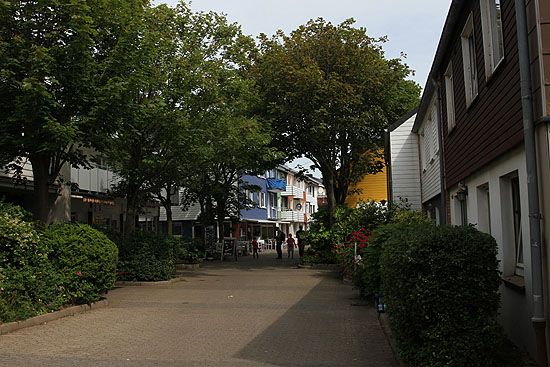
25. Jetty
From the Jetty, seawatching is possible, but light can be terrible.
26. Southern beach
The very touristic southern beach sometimes contains some passerines or even waders.
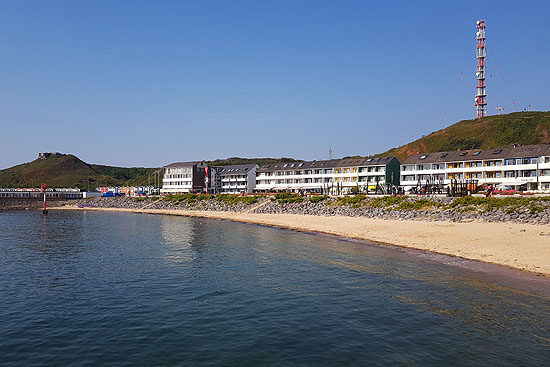
27. “Mittelland-East“
Unfortunately this area has suffered considerably due to succession and house building, so birding opportunities are not good anymore.
28. “Mittelland“
This crater is one of the best birding sites on Helgoland. The bushes can be crowded with migrants, which you can see from above. Take yourself time to wait what is hiding in the bushes! From the top you have a good overview over the sea and it is also a good spot for watching migrating birds (especially in early morning).
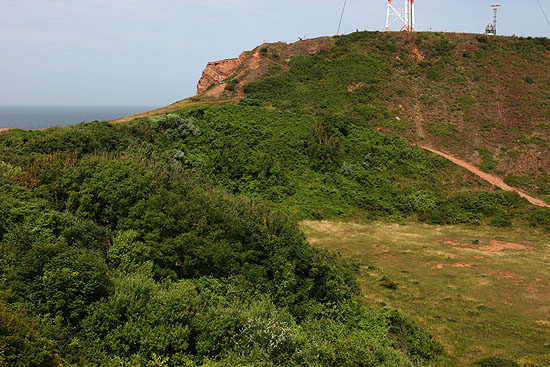
29. “Kringel“
The “Kringel” is one of the most preferred birding sites on Helgoland. Especially in easterly winds (wind shelter) and in the afternoon (sun-exposed) the area is great. The ruderal areas are excellent for wheatears and other passerines. The small beach often holds pipits, wagtails and all kind of warblers. During westerly gales gulls concentrate in the surf and it is the best site for Grey Phalaropes on Helgoland. However, at the moment part of the area is closed due to construction works and the area has suffered considerably from these activities.
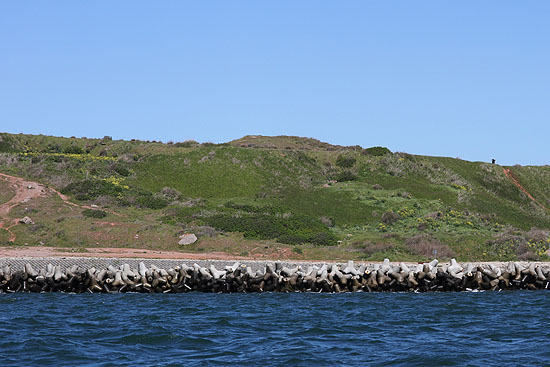
30. off SW
This marine area is often good for ducks and gulls (especially during storms), at the moment only visible from the top of the “Mittelland”. Also a small rocky intertidal is present during low tide.
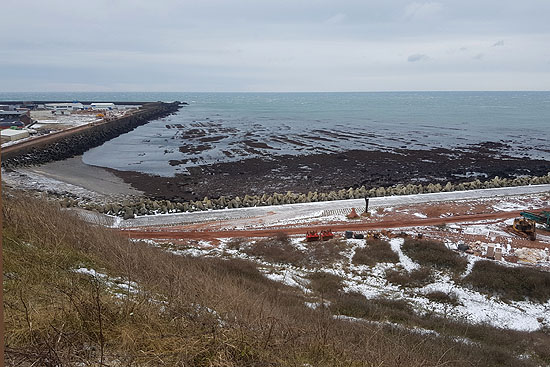
31. “Binnenhafen“
This small harbour sometimes holds divers, grebes and auks in winter.
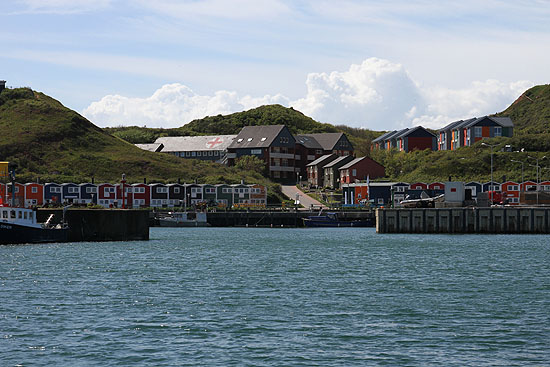
32. South harbour area
The open land of the south harbour area has recently been destroyed. The few remaining ruderal areas are nevertheless still interesting in spring and autumn. Especially pipits and Whinchats like the area, also the helicopter field attracts some birds. The western part has some salt marsh vegetation, which is good for Shorelarks and finches.
33. Southern harbour
Like in all other harbours, it sometimes hold single divers, grebes and auks.
34. Southwestern pier
Many migrants leave the island along the pier (also in spring), but wave noise prevents a good migration watch. Nevertheless the pier often holds passerines ready for migration (especially wheatears). From the bench of the pier seawatching can be productive, when wind and spray allow. The pier is also a good gull roost. However, the area is closed at the moment due to construction works.
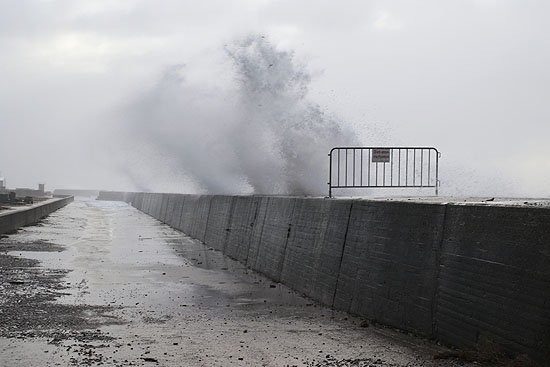
35. “Vorhafen“
The best and largest harbour for wildfowl, divers, grebes, mergansers and auks, mainly in winter.
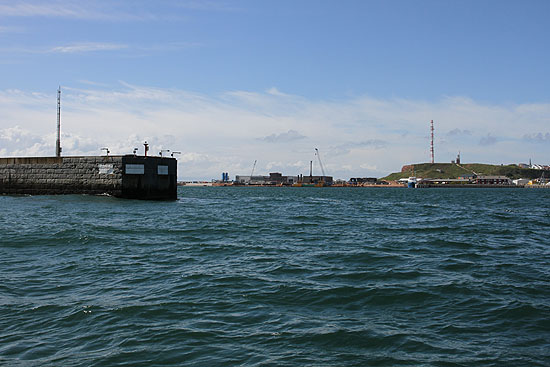
36. Southeastern pier
Also good for seawatching. Sometimes holds also gulls, Rock Pipits and Turnstones.
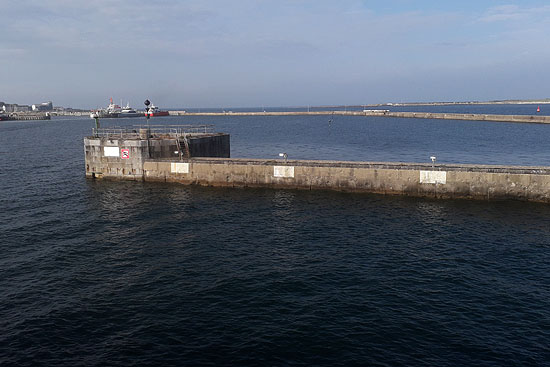
37. “Reede“
The area between main island and Dune Island usually holds some Common Eiders and in winter often divers, grebes and auks. Some wildfowl migrate through this area and allow good views.
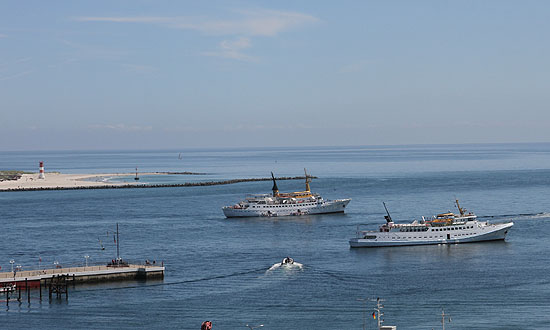
Dune Island:
Some general comments: On Dune Island only the tracks and the beaches are allowed for walking. All year round large numbers of Grey and Harbour Seals are present, which must not be disturbed. This is even more important during the cubbing season of the Grey Seals (November to January), when some beaches are nowadays closed.
38. Dune harbour
The pier of this harbour is excellent for gulls. The harbour itself often holds some grebes, ducks and auks, mainly in winter.
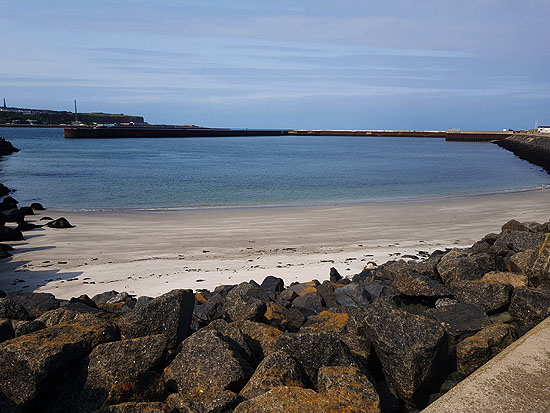
39. Dune Island nothwestern pier
This pier is good for Cormorants and gulls, in winter also for Purple Sandpiper.
40. Dune Island northern beach
Birdlife is similar as at the northeastern beach of the main island. The western corner often holds waders and the kelp in the tideline attracts a variety of birds, especially pipits and wheatears. In spring many Sandwich Terns display on the beach (but do not breed on Helgoland). It is an important site for seals, while the eastern part is a nude beach in summer and photographing is prohibited then.
41. Dune Island northeastern pier
Not as good as northwestern pier, but better for Purple Sandpiper.
42. Dune Island airstrip
The short vegetation attracts Golden Plovers, pipits, larks and wheatears, while the airstrip itself serves as a roost for many gulls.
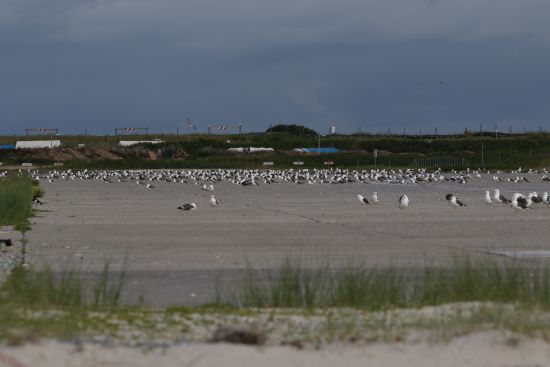
43. Dune Island “Aade“
The eastern part of Dune Island hosts the largest colony of Lesser Black-backed Gulls on Helgoland. The ruderal vegetation is an excellent area for Shorelarks, Snow Buntings, Twite, wheatears and pipits. The fenced protected area in the north has recently attracted large numbers of terns.
44. “Golfteich“
The pool adjacent to the minigolf pitch hosts breeding Water Rails and Moorhens. Sometimes wildfowl stopover during migration, while the bushes can be excellent for passerines.
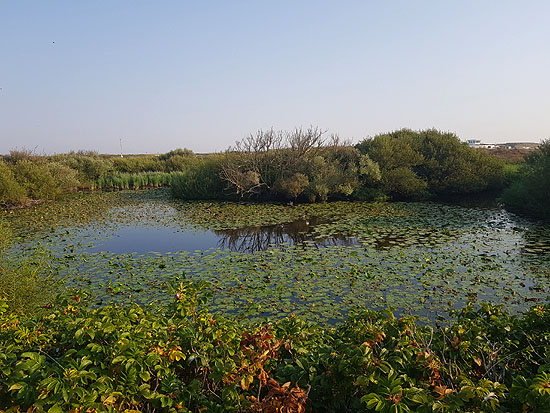
45. “Grillteich“
Similar to “Golfteich”, but better for Acrocephalus Warblers.
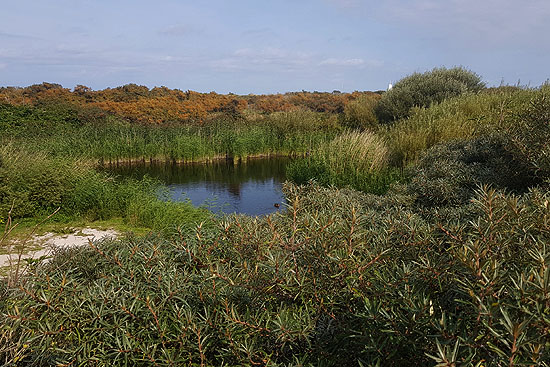
46. Dune Island central part
The inner part of Dune Island is excellent for birds, but due to access restrictions, birding opportunities are limited. Beside the two pools, the best areas is the small hill between the two pools, which is excellent for migration watching due to a 360° view. The bushes around the small cemetary are often good for passerines.
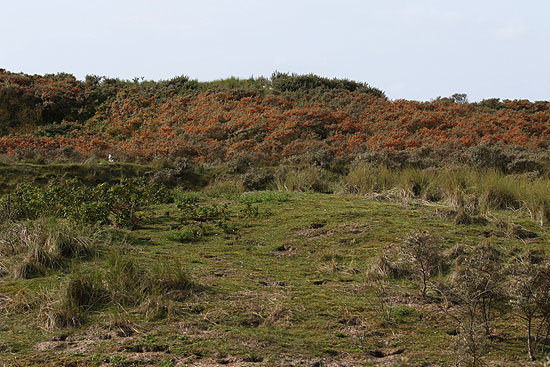
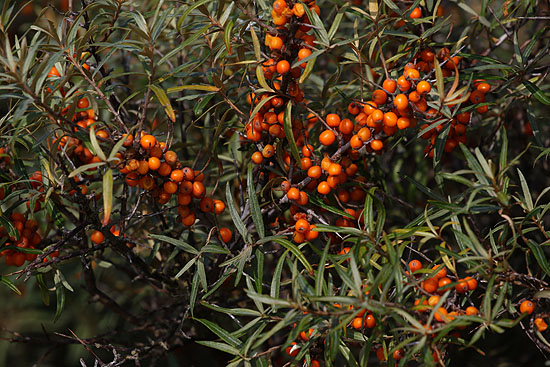
47. Dune Island southeastern pier
The southeastern pier often holds some waders, pipits, wagtails and wheatears.
48. Dune Island southern beach
Good site for waders, gulls, terns and seals, especially in the less frequented corners. In summer very touristic beach and therefore best avoided during the day.
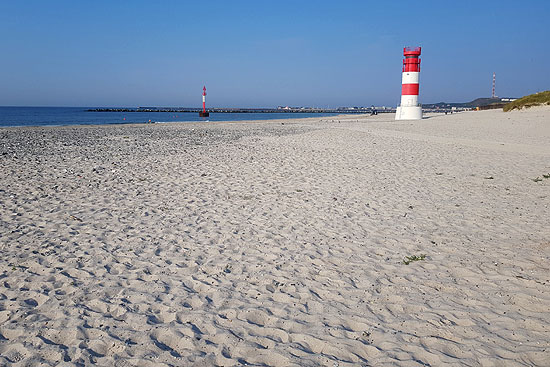
49. Dune Island southwestern pier
Good site for gulls, Turnstones and Purple Sandpipers.
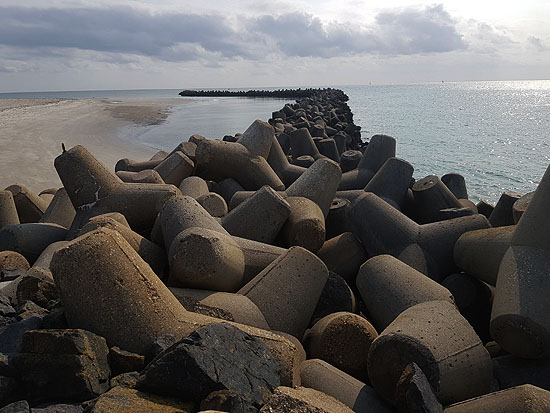
 Ornithologische Arbeitsgemeinschaft Helgoland e.V.
Ornithologische Arbeitsgemeinschaft Helgoland e.V.